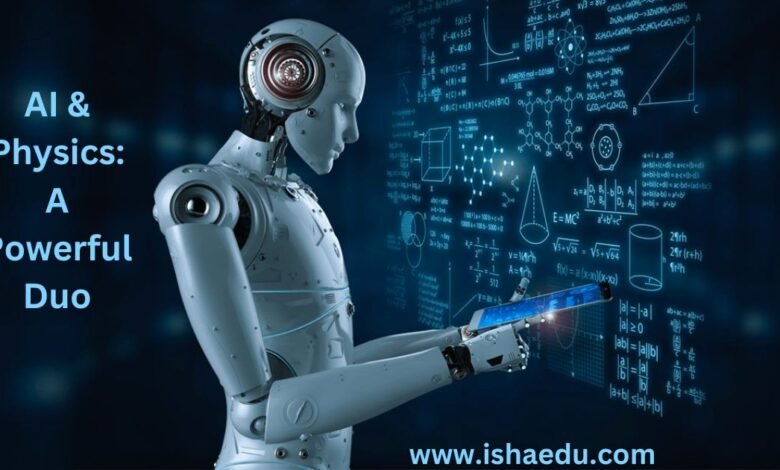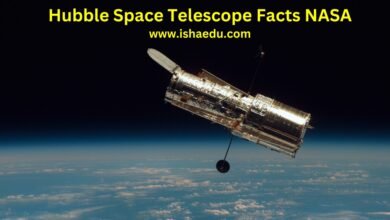AI & Physics: A Powerful Duo

AI & Physics: A Powerful Duo
Physics, the noble pursuit of deciphering the underlying principles governing the vast expanse of our universe, has been witness to profound revelations across the annals of time. Two towering intellects, Isaac Newton and Albert Einstein, loom large in this saga of human understanding. Their groundbreaking theories have reshaped our comprehension of space, time, motion, and the force of gravity.
Newton: Architect of the Framework
In the 17th century, Isaac Newton inaugurated a new epoch with his laws of motion and the universal law of gravitation. These elegant mathematical formulations elucidated the behavior of objects ranging from mundane falling apples to the majestic orbits of celestial bodies, weaving a seamless tapestry between the heavens and the Earth under a singular set of principles. His seminal contributions provided the scaffolding for classical mechanics, the predominant paradigm in physics for centuries.
Einstein: Revolutionizing Perception
Building upon the foundations laid by Newton, Albert Einstein’s theories of relativity in the early 20th century shattered the conventional understanding of space and time. He unveiled the profound insight that gravity is not a force exerted between objects, but rather the result of the curvature of spacetime induced by massive entities. Furthermore, Einstein’s revelations rendered time a relative construct, contingent upon the observer’s frame of reference. These groundbreaking concepts upended traditional notions, ushering in a new era of comprehension in physics.
The Emergence of Artificial Intelligence
Fast-forwarding to the 21st century, a novel contender has emerged onto the stage: artificial intelligence (AI). Leveraging advanced computational techniques, AI is poised to analyze vast troves of data, discern intricate patterns, and even formulate hypotheses in the realm of science. While devoid of consciousness or sentience, AI’s unparalleled capacity for rapid information processing heralds a new frontier in scientific inquiry.
The Interwoven Trajectory
The symbiotic relationship between physics, AI, and the pioneering works of Newton and Einstein is intricate and multifaceted.
- AI as a Catalyst: Researchers harness AI methodologies to dissect complex physical phenomena, from modeling the enigmatic nature of black holes to unraveling the mysteries shrouding the primordial universe. AI’s prowess lies in its ability to sift through colossal datasets, uncovering subtle nuances that may elude human cognition, thereby potentially paving the path toward paradigm-shifting discoveries.
- Drawn from the Masters: The enduring principles elucidated by Newton and Einstein serve as a wellspring of inspiration for AI innovation. Their pursuit of elegant, all-encompassing theories and the quest for fundamental truths resonate deeply with the aspirations of many AI researchers.
- The Unfolding Horizon: As AI continues its evolutionary trajectory, its impact on the physics landscape is poised to deepen further. Perhaps AI will aid in refining and validating existing theories or even catalyze the emergence of entirely novel conceptual frameworks. The trajectory of this intertwined voyage into the future remains tantalizingly uncertain.
While the methodologies and objectives of physics and AI may diverge, their trajectories are increasingly converging. As humanity delves deeper into the enigmas of the cosmos, the wisdom imparted by luminaries like Newton and Einstein, coupled with the burgeoning capabilities of AI, holds the promise of unveiling even more profound mysteries lurking within the fabric of our universe.

FAQs
What is the relationship between AI and physics?
AI and physics have a dynamic relationship. AI helps physicists analyze data, model complex systems, and automate tasks. Physics inspires new AI algorithms and paves the way for quantum computing. Challenges include interpretability and collaboration, but the potential for discovery is vast.
Can AI help with physics?
AI is transforming physics by:
- Data diving: Finding hidden patterns in massive datasets.
- Modeling marvels: Building simulations of complex systems.
- Automating tasks: Freeing up researchers for deeper exploration.
- Hypothesizing discoveries: Suggesting new possibilities to investigate.
AI is a powerful tool, but it works alongside human scientists who interpret results, design experiments, and conclude. Together, they’re unlocking the secrets of the universe.
What AI is best at physics?
Different AI tools shine in different physics tasks. They’re great at finding patterns in data, modeling complex systems, automating tedious work, and even suggesting new ideas. But remember, AI is a tool, not a substitute for human scientists! Together, they can unlock amazing discoveries.
Can I do AI after physics?
Absolutely! You can explore AI after physics. Both fields share a foundation in math and analysis, so your physics background will be a valuable asset.
To prepare for the switch:
- Explore your interests: What specifically draws you to AI? Boost your focus and learn more effectively.
- Assess your skills: Depending on your physics studies, you might need to learn some programming, machine learning, etc. Many online resources can help.
- Define your goals: Research the skills needed for your desired AI role.
Where is AI used in physics?
AI is playing a big role in physics:
- Data analysis: It helps find patterns, classify data, and make sense of massive datasets.
- Modeling: It creates more accurate models of complex systems, even for dangerous or hard-to-explore ones.
- Theory: It suggests new ideas and automates calculations to speed up research.
Overall, AI is a powerful tool helping physicists make discoveries, understand the universe better, and do research faster.
Is physics required for AI engineering?
While physics isn’t mandatory for all AI engineering, it can be a plus:
- Problem-solving: Physics helps develop strong analytical skills for tackling complex AI challenges.
- Math skills: Physics overlaps with key AI math areas like linear algebra and calculus, making learning them easier.
- Real-world applications: Physics knowledge is valuable in AI for robotics, self-driving cars, and more.

AI اور طبیعیات: ایک طاقتور جوڑی
طبیعیات، ہمارے وسیع کائنات کی بنیادی اصولوں کو سمجھنے کی ایک عظیم جستجو، نے وقت کے ساتھ ساتھ بہت سی بڑی دریافتों کو دیکھا ہے۔ اس کہانی میں دو عظیم ذہن، آئزک نیوٹن اور البرٹ آئن سٹائن نمایاں ہیں۔ ان کے انقلابی نظریات نے خلا، وقت، حرکت اور کشش ثقل کے بارے میں ہماری سمجھ کو بدل دیا ہے۔
نیوٹن: چارچہ بنانے والے
17 ویں صدی میں، آئزک نیوٹن نے اپنے قوانین حرکت اور کشش ثقل کے عام قانون کے ساتھ ایک نئے دور کا آغاز کیا۔ ان خوبصورت ریاضیاتی فارمولوں نے عام گرتے ہوئے سیب سے لے کر آسمانی اجسام کے شاندار مداروں تک اشیاء کی حرکت کی وضاحت کی، جو زمین اور آسمان کے درمیان ایک واحد اصول کے تحت رشتہ جوڑتا ہے۔ ان کی اہمیت کی وجہ سے کلاسیکی میکانیات کی بنیاد رکھی گئی، جو صدیوں تک طبیعیات میں غالب نظریہ رہا۔
آئن سٹائن: مشاہدے میں انقلاب
20 ویں صدی کے اوائل میں، البرٹ آئن سٹائن کے نظریہ نسبیت نے خلا اور وقت کی عام سمجھ کو توڑ دیا۔ انہوں نے یہ گہری حقیقت بتائی کہ کشش ثقل کسی چیز کے درمیان لگائی جانے والی قوت نہیں ہے، بلکہ بڑے اجسام کی وجہ سے پیدا ہونے والے خمیدہ خلا-وقت کا نتیجہ ہے۔ اس کے علاوہ، آئن سٹائن کی دریافتوں نے وقت کو ایک رشتہ دار تصور بنا دیا، جو مشاہدے کے حوالے پر منحصر ہے۔ ان انقلابی تصورات نے روایتی خیالات کو بدل دیا اور طبیعیات میں سمجھ کی ایک نئی راہ ہموار کی۔
مصنوعی ذہانت کا ابھار
21 ویں صدی میں، ایک نیا علم میدان میں آیا: مصنوعی ذہانت (AI)۔ جدید کمپیوٹنگ طریقوں سے فائدہ اٹھاتے ہوئے، AI بڑے پیمانے پر ڈیٹا کا تجزیہ کرنے، پیچیدہ نمونوں کی نشاندہی کرنے اور یہاں تک کہ سائنس کے میدان میں مفروضے بنانے کے قابل ہے۔ اگرچہ شعور یا احساسات سے محروم ہے، لیکن معلومات کو تیزی سے پروسیسنگ کرنے کی AI کی بے مثال صلاحیت سائنسی تحقیق میں ایک نئے دور کا آغاز کرتی ہے۔
متعلقہ راستہ
طبیعیات، AI، اور نیوٹن اور آئن سٹائن کے ابتدائی کاموں کے درمیان تعلق گہرا اور مختلف پہلوؤں پر مشتمل ہے۔
AI بطور محرک: محققین پیچیدہ طبیعیاتی واقعات کو سمجھنے کے لیے AI کے طریقوں کا استعمال کرتے ہیں، جیسے بلیک ہولز کی پراسرار فطرت کی ماڈلنگ سے لے کر ابتدائی کائنات کے اسراروں کو کھولنے تک۔ AI کی صلاحیت بڑے پیمانے پر ڈیٹا سیٹس کو چھاننے میں ہے، جو انسانی سوچ سے اوجھل نکات کو دریافت کرتی ہے، اور اس طرح انقلابی دریافت کی راہ ہموار کرتی ہے۔
ماہرین سے اخذ: نیوٹن اور آئن سٹائن کے واضح اصول AI کی جدت کے لیے ایک تحریک کا کام کرتے ہیں۔ خوبصورت، جامع نظریات اور بنیادی سچائیوں کی تلاش کی ان کی جستجو بہت سے AI محققین کی خواہشات سے گونجتی ہے۔
مستقبل کا انکشاف: جیسے جیسے AI اپنی ترقیاتی رفتار برقرار رکھتا ہے، اس کا طبیعیات پر اثر ہوتا جائے گا۔ شاید AI موجودہ نظریات کو بہتر بنانے اور ان کی توثیق کرنے میں مدد دے گا یا یہاں تک کہ بالکل نئے تصوراتی فریم ورکس کے ابھرنے کا باعث بھی بنے گا۔ اس مشترکہ سفر کا راستہ اب بھی غیر یقینی ہے۔
اکثر پوچھے گئے سوالات
AI اور طبیعیات کے درمیان کیا تعلق ہے؟
AI اور طبیعیات کا ایک متحرک رشتہ ہے۔ AI طبیعیات دانوں کو ڈیٹا کا تجزیہ کرنے، پیچیدہ نظاموں کی ماڈلنگ کرنے اور کاموں کو خودکار بنانے میں مدد کرتا ہے۔ طبیعیات نئے AI الگورتھم کو متاثر کرتی ہے اور کوانٹم کمپیوٹنگ کی راہ ہموار کرتی ہے۔ ان چیلنجوں میں وضاحت اور تعاون شامل ہیں، لیکن دریافت کی صلاحیت بہت زیادہ ہے۔
کیا AI طبیعیات میں مدد کر سکتا ہے؟
AI طبیعیات کو اس طریقے سے تبدیل کر رہا ہے:
ڈیٹا ڈائیونگ: بڑے پیمانے پر ڈیٹا سیٹوں میں چھپے ہوئے نمونے تلاش کرنا۔
ماڈلنگ مارولز: پیچیدہ نظاموں کے سمیولیشنز بنانا۔
خودکار کاریں: گہرے کھوج کے لیے محققین کو آزاد کرنا۔
فرضیات کی دریافت: تحقیق کے لیے نئی امکانات تجویز کرنا۔
AI ایک طاقتور آلہ ہے، لیکن یہ انسانی سائنسدانوں کے ساتھ کام کرتا ہے جو نتائج کی ترجمانی کرتے ہیں، تجربات ڈیزائن کرتے ہیں اور نتیجہ اخذ کرتے ہیں۔ مل کر، وہ کائنات کے رازوں کو غیر مقفل کر رہے ہیں۔
کیا میں طبیعیات کے بعد AI کر سکتا ہوں؟
بالکل! آپ طبیعیات کے بعد AI کو دریافت کر سکتے ہیں۔ دونوں میدان ریاضی اور تجزیہ میں ایک بنیاد شیئر کرتے ہیں، اس لیے آپ کا طبیعیات کا پس منظر ایک قیمتی اثاثہ ہوگا۔
سوئچ کو تبدیل کرنے کی تیاری کے لیے:
اپنے مفادات کو دریافت کریں: آپ کو خاص طور پر AI کی طرف کیا راغب کرتا ہے؟ اپنے فوکس کو بڑھائیں اور زیادہ مؤثر طریقے سے سیکھیں۔
اپنی صلاحیتوں کا جائزہ لیں: آپ کی طبیعیات کی پڑھائی کے مطابق، آپ کو کچھ پروگرامنگ، مشین لرننگ وغیرہ سیکھنے کی ضرورت پڑ سکتی ہے۔ بہت سے آن لائن وسائل مدد کر سکتے ہیں۔
اپنے مقاصد کی وضاحت کریں: اپنے مطلوبہ AI کردار کے لیے ضروری صلاحیتوں کی تحقیق کریں۔
طبیعیات میں AI کہاں استعمال ہوتا ہے؟
طبیعیات میں AI ایک اہم کردار ادا کر رہا ہے:
ڈیٹا تجزیہ: یہ نمونے تلاش کرنے، ڈیٹا کو درجہ بندی کرنے اور بڑے پیمانے پر ڈیٹا سیٹوں کو سمجھنے میں مدد کرتا ہے۔
ماڈلنگ: یہ پیچیدہ نظاموں کے زیادہ درست ماڈل بناتا ہے، یہاں تک کہ خطرناک یا مشکل سے تلاش کیے جانے والے ماڈل کے لیے بھی۔
نظریہ: یہ نئے خیالات تجویز کرتا ہے اور تحقیق کی رفتار تیز کرنے کے لیے حسابات کو خودکار کرتا ہے۔
مجموعی طور پر، AI ایک طاقتور آلہ ہے جو طبیعیات دانوں کو دریافتیں کرنے، کائنات کو بہتر سمجھنے اور تیزی سے تحقیق کرنے میں مدد کرتا ہے۔

Join Us :
Click Here To Get Technology And Entertainment Notification:




